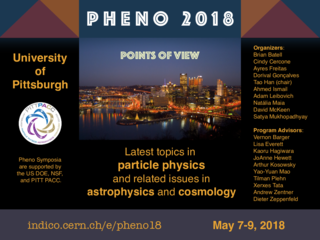Speaker
Description
Dark matter that is capable of sufficiently heating a local region in a white dwarf will trigger runaway fusion and ignite a type 1a supernova.
We consider dark matter (DM) candidates that heat through the production of high-energy standard model (SM) particles, and show that such particles will efficiently thermalize the white dwarf medium and ignite supernovae.
Based on the existence of long-lived white dwarfs and the observed supernovae rate, we put new constraints on ultra-heavy DM candidates $m_\chi > 10^{16}~\text{GeV}$ which produce SM particles through annihilation, decay, and DM-SM scattering in the stellar medium.
As a concrete example, we rule out supersymmetric Q-ball DM in parameter space complementary to terrestrial bounds.
We put further constraints on DM that is captured by white dwarfs, considering the formation and self-gravitational collapse of a DM core.
For asymmetric DM, such a core may form a black hole that ignites a supernovae via Hawking radiation, and for ``almost asymmetric'' DM with non-zero but sufficiently small annihilation cross section may ignite the star via a burst of annihilation during gravitational collapse.
This constrains much lighter candidates, $m_\chi > 10^{7}~\text{GeV}$.
It is also intriguing that the DM-induced ignition discussed in this work provide an alternative mechanism of triggering supernovae from sub-Chandrasekhar mass progenitors.

